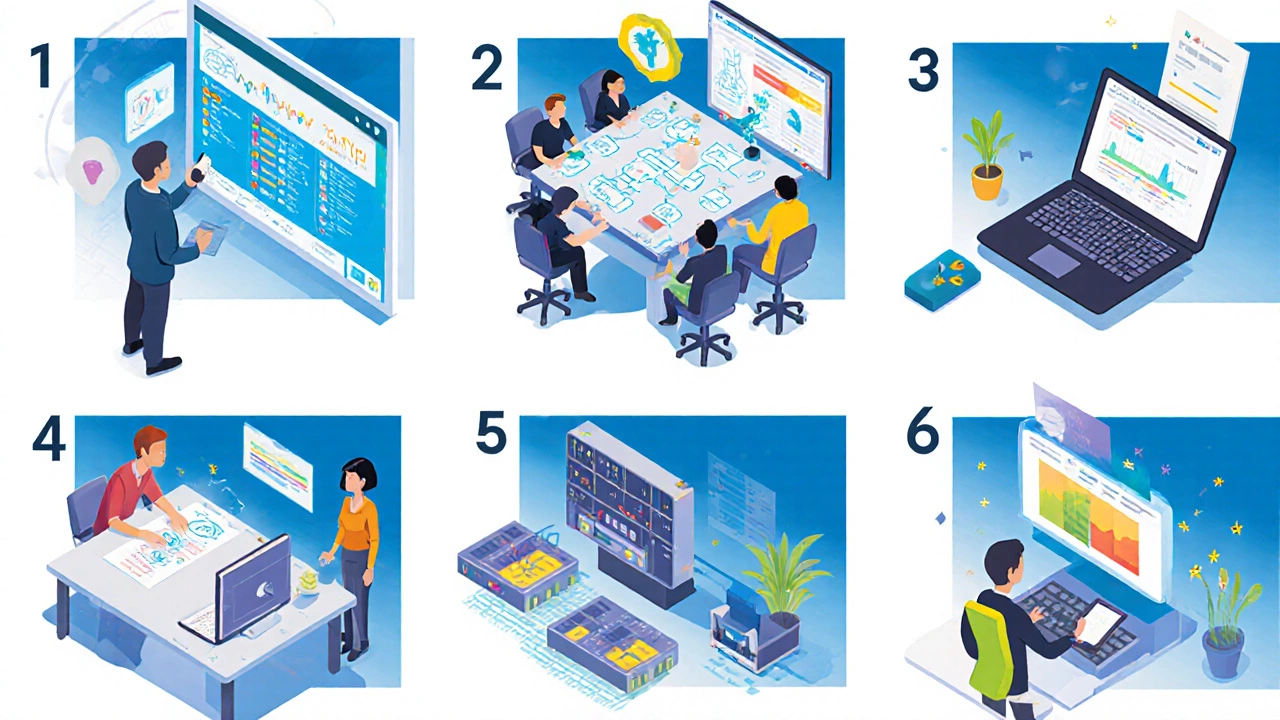Services Architect Certification Advisor
Find Your Ideal Certification Path
Answer a few questions to get personalized certification recommendations based on your background and goals.
Ever wondered who pulls the technical strings behind complex service ecosystems? That’s the services architect - the person turning business goals into workable, scalable solutions.
Defining the Services Architect
When you first meet a Services Architect is a professional who designs, integrates, and oversees the delivery of IT services that align with business strategies, you’re looking at the bridge between what the business wants and what the technology can deliver. Unlike a pure coder, a services architect thinks in end‑to‑end flows, ensuring every API, cloud component, and process talks to the right partner.
Core Responsibilities
- Map business objectives to service capabilities.
- Design service blueprints that include APIs, data models, and security controls.
- Choose platforms - whether on‑prem, public cloud, or hybrid - that match performance and cost targets.
- Coordinate with developers, operations, and business analysts to keep delivery on track.
- Maintain governance: versioning, SLAs, and compliance checks.
Typical Day in the Life
- Morning sync: Review upcoming release tickets, check service health dashboards, and adjust priorities.
- Stakeholder workshop: Translate a new product idea into a service map, using BPMN sketches to show data flow.
- Design sprint: Draft API contract (OpenAPI spec), decide on authentication (OAuth 2.0 vs SAML), and sketch cloud resource diagrams.
- Peer review: Walk through the design with a Solution Architect (focuses on technology solutions for specific problems, often within a project scope) to ensure alignment with the broader tech stack.
- Documentation: Update the service catalogue, add version notes, and publish to the internal wiki.
- Evening wrap‑up: Check monitoring alerts, verify that any incidents are logged, and note lessons learned for the next iteration.
Key Skills and Tools
To thrive, a services architect needs a blend of soft and hard skills.
- Business acumen: Understanding revenue drivers, user journeys, and regulatory constraints.
- Technical fluency: Familiarity with Cloud Computing (delivers on‑demand resources via providers like AWS, Azure, or GCP and container orchestration (Kubernetes).
- Modeling expertise: Using Business Process Modeling (creates visual representations of workflows, often with BPMN to align tech with processes.
- API design: Crafting RESTful or GraphQL contracts, documenting with OpenAPI.
- Governance knowledge: Applying IT Service Management (ITSM) (frameworks like ITIL that manage service lifecycle standards for incident, change, and problem management.

How It Differs from Other Architecture Roles
| Aspect | Services Architect | Solution Architect | Enterprise Architect |
|---|---|---|---|
| Primary focus | Design & governance of reusable services | End‑to‑end solution for a specific business problem | Strategic alignment of IT with overall enterprise goals |
| Typical scope | Service catalog, APIs, contracts, SLAs | Application stack, integration points, deployment model | Technology roadmap, standards, portfolio management |
| Key deliverables | Service blueprints, versioned APIs, governance policies | Solution design document, proof‑of‑concept, migration plan | Enterprise architecture framework, reference models |
| Stakeholder interaction | Product owners, operations, security teams | Project managers, developers, QA leads | C‑suite, IT leadership, business unit heads |
| Typical metrics | Service reuse rate, API latency, SLA compliance | Time‑to‑market, defect density, budget variance | IT spend vs. business value, architectural debt |
Career Path and Certifications
Most services architects start as developers or system administrators, then move into roles like Solution Architect before expanding to service‑wide thinking. Popular certifications that boost credibility include:
- TOGAF (The Open Group Architecture Framework) - gives a solid enterprise‑level view.
- ITIL Foundation - aligns with ITSM practices.
- AWS Certified Solutions Architect - validates cloud service design skills.
- OpenAPI Specification (OAS) certification - shows mastery of API contracts.
Common Pitfalls and How to Avoid Them
- Over‑engineering services: Building a micro‑service for every tiny function balloons complexity. Keep the service granularity balanced - aim for “single responsibility” but also consider operational overhead.
- Neglecting governance: Without versioning and clear SLAs, downstream teams get stuck. Adopt a lightweight governance model early, using tools like SwaggerHub for API lifecycle.
- Ignoring security early: Adding auth layers after the fact leads to re‑work. Embed security controls (OAuth, rate limiting) in the design phase.
- Isolating from business: Designing services in a vacuum creates mismatches with real user needs. Hold regular “business‑tech alignment” stand‑ups to capture shifting priorities.

Future Trends Shaping the Role
As we head deeper into 2025, a services architect will need to keep an eye on a few emerging forces:
- Event‑driven architectures: More companies are moving to Kafka or Pulsar to react in real time. Services must expose event schemas as part of their contract.
- AI‑augmented design tools: Platforms like AWS Bedrock can suggest API structures based on natural‑language requirements, speeding up the early design stage.
- Zero‑trust networking: Security is becoming a service attribute, not an afterthought. Zero‑trust principles are baked into service mesh configurations (e.g., Istio).
- Composable commerce: Retailers assemble storefronts from modular services. Understanding composability is now a must‑have skill.
Quick Checklist for Aspiring Services Architects
- Learn the basics of cloud platforms (AWS, Azure, GCP).
- Master API design - REST, GraphQL, OpenAPI.
- Study ITIL/ITSM frameworks for service lifecycle.
- Practice modeling business processes with BPMN tools.
- Get familiar with governance tools - SwaggerHub, Apigee.
- Earn at least one cloud architect certification.
- Build a personal service catalogue - showcase reusable services you’ve designed.
Frequently Asked Questions
What is the main difference between a services architect and a solution architect?
A services architect focuses on creating reusable, governed services that can be consumed across many solutions, while a solution architect designs a complete, end‑to‑end system to solve a specific problem.
Do I need a programming background to become a services architect?
Yes, understanding code, APIs, and deployment pipelines helps you design realistic services, but you don’t have to be a senior developer. Experience with system integration is more critical.
Which certification adds the most value for a services architect?
AWS Certified Solutions Architect - Professional is highly regarded because most modern services run on cloud platforms, and the exam tests both design and governance skills.
How do services architects ensure security across APIs?
By defining security contracts early - choosing authentication methods (OAuth 2.0, JWT), enforcing rate limits, and embedding security testing in CI/CD pipelines.
Can a services architect work without a cloud provider?
Yes, on‑premise service buses and private clouds can host services, but the core principles-service contracts, governance, and reuse-remain the same.
Understanding what a services architect does equips you to bridge the gap between business ambition and technical reality. Whether you’re aiming to design the next‑gen API platform or simply want to improve service reliability, the roadmap above gives you concrete steps to get there.






